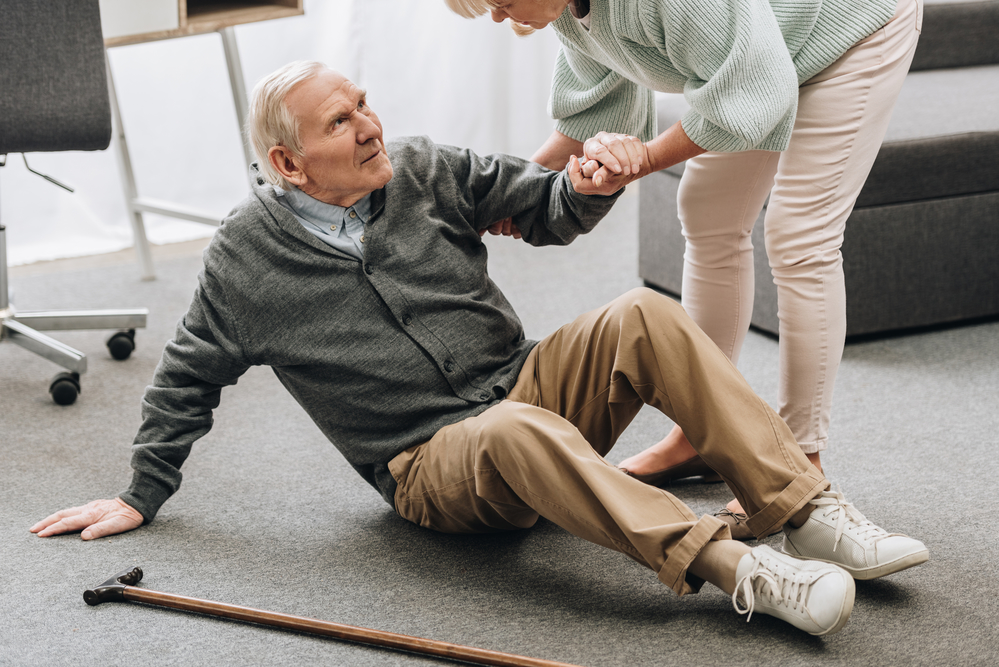Trips and Falls: Preventing the Most Common Causes of Injury in Senior Citizens
 Trips and falls are the most common causes of serious injury in senior citizens. As you age, your bones become frailer and your muscles become weaker, which means even a small stumble can have much more serious consequences than when you were younger. So, it’s important that you take the proper steps to prevent these causes of injury as much as you possibly can. Here are a few tips that may help.
Trips and falls are the most common causes of serious injury in senior citizens. As you age, your bones become frailer and your muscles become weaker, which means even a small stumble can have much more serious consequences than when you were younger. So, it’s important that you take the proper steps to prevent these causes of injury as much as you possibly can. Here are a few tips that may help.
Tack Down Loose Rugs
If there are rugs in your home, be sure that the edges are secured to the floor. Loose rugs can easily be snagged by a foot, cane, or walker, and become a major tripping hazard. There are special kinds of tape and mats that can be used to secure rugs to both hard flooring and carpet, or you can apply certain kinds of tacks to rugs that are on carpet. This helps keep the rug in place, so you’re less likely to trip over it.
Remove Cords from Walking Areas
Electronics (and the cords that come with them) are a part of our everyday lives. However, it’s important that you ensure those cords aren’t stretched across walking areas. These can pose a major tripping hazard if they’re left out in the open. Instead, make sure cords run around the edges of the room.
Invest in a few extra extension cords if necessary; you may even want to consider hiring an electrician to add a few outlets if you’re having trouble plugging in your devices without running the cords all over the room. It’s a small price to pay for your safety, and your home will look much neater and tidier without electrical cords strung out across the living space.
Address Furniture Concerns
Unstable furniture can be a major cause of falls in senior citizens. A dining chair or stool that shifts or wobbles unexpectedly can catch you off-guard, and quickly send you to the floor. Be sure any wobbly or unstable furniture is fixed or replaced.
Additionally, if you find you have trouble sitting or standing from your current furniture on your own, consider replacing it. Sitting down and standing up without assistance can be tricky on deep-seated chairs and sofas, so look into alternatives. You may even want to consider purchasing a lift chair.
These types of chairs have the comfort and appearance of an armchair, but make sitting and standing on your own much safer and easier. The seat rises to meet you while standing, then slowly lowers you into a seated position. When you’re ready to get up, it will gently lift you to a standing position so you can find your feet without worrying about stumbling or falling.
Install Grab Bars Where Needed
Certain areas of the home are always going to be a bit more treacherous for those with limited mobility. The majority of these areas are found in the bathroom. Bathtubs, showers, and even toilets can be tricky to navigate if you’re not completely steady on your feet. Don’t wait until after you’ve slipped and injured yourself to install grab bars around these areas in your bathroom. They’re a simple, low-cost solution that can prevent serious injury in the future.
Keep It Bright
Often, reduced eyesight is more to blame for trips and falls than reduced mobility. Most people’s eyesight deteriorates as they age, and this can make it more difficult for you to notice small tripping hazards in your path, such as the cords and rugs we mentioned earlier. So, it’s important to keep your home well-lit to help ensure you notice anything in your path that might trip you up.
Keep Clutter Out of Walkways
Not everyone is a neat freak, and that’s just fine. However, it is important that you make efforts to keep any objects or clutter out of your walkways. This is especially important on stairs; many people will stack items that need to go upstairs at the bottom of the steps. However, this can create a tripping hazard, which can result in a serious fall and injury. Keep items out of these walking areas to reduce your likelihood of tripping and injuring yourself.
Reduced mobility is a common part of aging, and you may begin to notice that you’re more prone to stumbling and tripping in your later years. Use the tips above to reduce your odds of injuring yourself with a trip or fall, and contact us to learn more about lift chairs, grab bars, and other items that can help make your home a safer place.